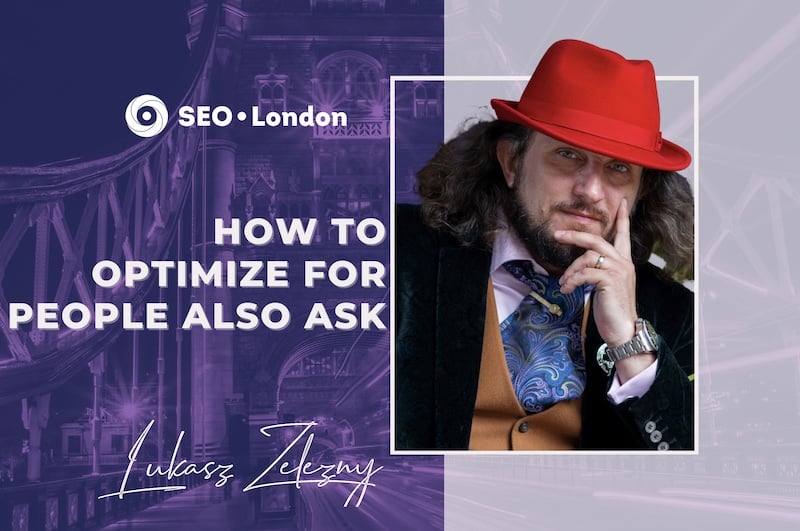

What Are People Also Ask (PAA) Boxes and How Do You Rank for Them?
People Also Ask (PAA) boxes are taking over Google’s search results. According to Moz, nearly four out of five search queries now have them. PAA boxes, however, aren’t the same as standard listings. They are still classified as organic listings, but they have a unique format that makes them stand out in Google’s search results. What are PAA boxes exactly, and how do you rank for them?
Overview of PAA Boxes
Also known as related questions boxes, PAA boxes are drop-down listings with questions related to a user’s search query. They can appear for searches performed on desktop and mobile devices. Each PAA box contains two to four questions by default. Clicking an included question will expand the PAA box so that it reveals an answer from an indexed web page.
Increase your online presence with Lukasz Zelezny, an SEO Consultant with over 20 years experience — schedule a meeting now.
Google will only show a single PAA box for any given search query. With that said, PAA boxes are dynamic listings that automatically become longer when users click them. Users can click any question in a PAA box to find an answer to it. When clicked, the PAA box will expand while simultaneously updating itself with new questions at the bottom. Each question a user clicks will result in one to three new questions being added to the bottom of the PAA box.
PAA Boxes vs Standard Listings
Unlike standard listings, PAA boxes require multiple clicks to visit an indexed web page. Users can visit an indexed web page in a standard listing by clicking the linked title. To visit an indexed web page in a PAA box, they must click the appropriate question, after which they can click the linked title.
PAA boxes always appear at the top of Google’s results. You won’t find them at or near the bottom of Google’s results. Standard listings, on the other hand, may appear anywhere in Google’s results.
Another difference between PAA boxes and standard listings involves the layout. Standard listings feature a traditional layout consisting of a linked title at the top, followed by a description and then a URL. PAA boxes feature a reversed layout. Indexed web pages in PAA boxes consist of a description at the top, followed by a URL and then a linked title.
Of course, the defining characteristic of PAA boxes is the presence of questions and answers. They all contain questions related to a user’s search query, and users can click these questions to find answers taken from indexed web pages. Standard listings may or may not contain questions and answers.
How to Rank for PAA Boxes
Ranking for PAA boxes requires optimization for questions rather than conventional keywords. Google introduced PAA boxes in 2015 to help users discover content related to the questions for which they searched. If your website doesn’t contain any answers, it probably won’t rank for PAA boxes.
Start by creating a list of questions that are relevant to the audience and purpose of your website. You can review emails sent by visitors for ideas. If your website has comments enabled on its pages, you can review these visitor-created comments for ideas as well.
With a list of questions in hand, it’s time to create answers in the form of website content. Create a new page of content for each question. Each page of content should focus on providing a direct answer. Don’t just write a couple of sentences for the answer. Instead, elaborate on the answer by going into detail. You can then summarize the answer at the bottom of the page.
Optimizing your website’s meta title tags will help it rank for PAA boxes. Indexed pages in PAA boxes have a title. And like with standard listings, these titles typically represent the pages’ meta title tags. For meta title tags, you should typically use questions. A page’s meta title tag should be the question for which you want it to rank, and the page’s content should be the answer to that question.
Keep in mind that PAA boxes don’t use meta description tags. For indexed pages in PAA boxes, the description consists of a text excerpt. Google will take a snippet of text from a page to use in the page’s PAA listings. You can still create meta description tags, but they won’t influence PAA box rankings.
When publishing answers on your website, don’t forget to include images. PAA boxes support images. The indexed web pages in PAA boxes may feature an image. Some of them only contain text, but others have text and an image. Including images with your answers will make your website eligible for these visualized PAA listings.
Images also allow you to project relevancy with alt text tags. You can show Google that a page is relevant to a question by mentioning it in an alt text tag. For each page, include at least three images, all of which should have an alt text tag.
In addition to images, PAA boxes support certain types of Hypertext Markup Language (HTML) formatting. They can feature HTML lists, for instance. Whether ordered or unordered, if you include an HTML list as part of an answer, it may appear in a PAA box. PAA boxes support HTML tables as well.
You should consider using a third-party SEO tool to track your website’s PAA rankings. Without the right tool, you won’t be able to tell which PAA boxes your website ranks for. While Google Search Console can reveal general ranking data, it doesn’t offer PAA ranking data. Fortunately, there are third-party SEO tools that are capable of tracking PAA rankings. You can use Moz to track your website’s PAA rankings, or you can use Advanced Web Ranking.
By targeting PAA boxes in your search engine optimization (SEO) strategy, your website will benefit from increased exposure and more organic traffic. PAA boxes are special Google listings. They consist of a set of related questions that users can click to discover answers and visit the indexed pages from which those answers were taken. You can rank for them by creating high-quality, well-optimized answers in the form of website content.
This post was last modified on %s = human-readable time difference
Recent Posts
I Spent $2000 on Visual Links with Rhino Rank: Here’s My Honest Review
In the ever-evolving landscape of SEO and digital marketing, Rhino Rank continues to lead the…
What is SCO in digital marketing
In this fast paced digital world understanding SCO in marketing marketing is key to anyone…
What is ?srsltid= parameter
In the world of digital search and navigation, there are many mysterious parameters hidden in…
Google My Business: How to Check Your Ranking
In today’s world we live in, having an online presence is key for any business…
How to Get to the Top of Google Maps
In this digital age visibility is everything and being at the top of Google Maps…
How to calculate organic click through rate
In the world of digital marketing we need to know how to calculate CTR and…